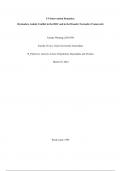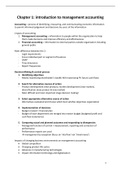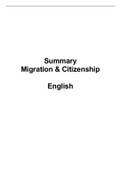Essay
Atrocity Actors; Perpetrators, Bystanders and Victims: Bystander assignment
- Instelling
- Vrije Universiteit Amsterdam (VU)
Bystander assignment (graded 7,5) for the course Atrocity Actors; Perpetrators, Bystanders and Victims. Papers research question: How can we explain the decisions of those working at the UN as bystanders to the war in the DRC as told in the documentary “Peacekeepers”?
[Meer zien]









